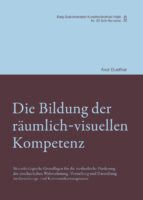“To see and to be seen is to exist.” The state of research in the neurosciences proves that the world we see every day is a construction of our consciousness. We and the environment only exist to the extent that we are consciously and unconsciously aware of them. We also have the certainty that something exists outside our consciousness. To form our imagination, we need a permanent source of events whose explanation requires the existence of a world outside our consciousness. If nothing happens after birth or we do nothing actively, then we effectively remain blind, as our memory cannot form a vivid image of the reality of our own lives. We see a phenomenal world of color and light whose structures do not refer to other content because we have not been able to form associative links in the brain.
Nowhere is this more evident than in the case of people who look back on their lives after a brain injury. They often only realize that something fundamental has changed when they see the consequences of their actions. People, places or objects are suddenly missing from their world, as if they had never existed in it before. If the associative connections of our nerve networks in the brain are destroyed, we lose parts of our knowledge structure. Things can disappear completely, as can their usage properties, behavioral states or action potentials. This also changes our spatial-visual competence, allowing us to recognize the functional structures of our brain’s processing. The association network determines our reality.
To the extent that we lose access to the “vocabulary” or “image treasure” of our memory, we experience difficulties in understanding and communicating. This shows that the memory reference of our visual space forms a language system whose structures of meaning and action result from the communication process with the environment.


